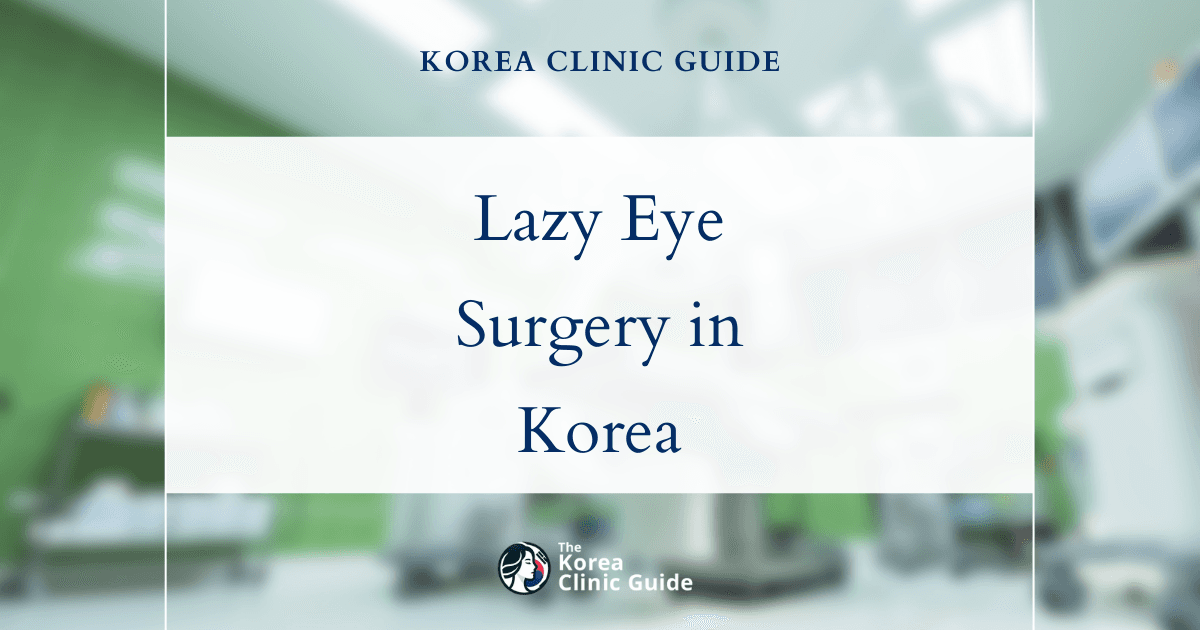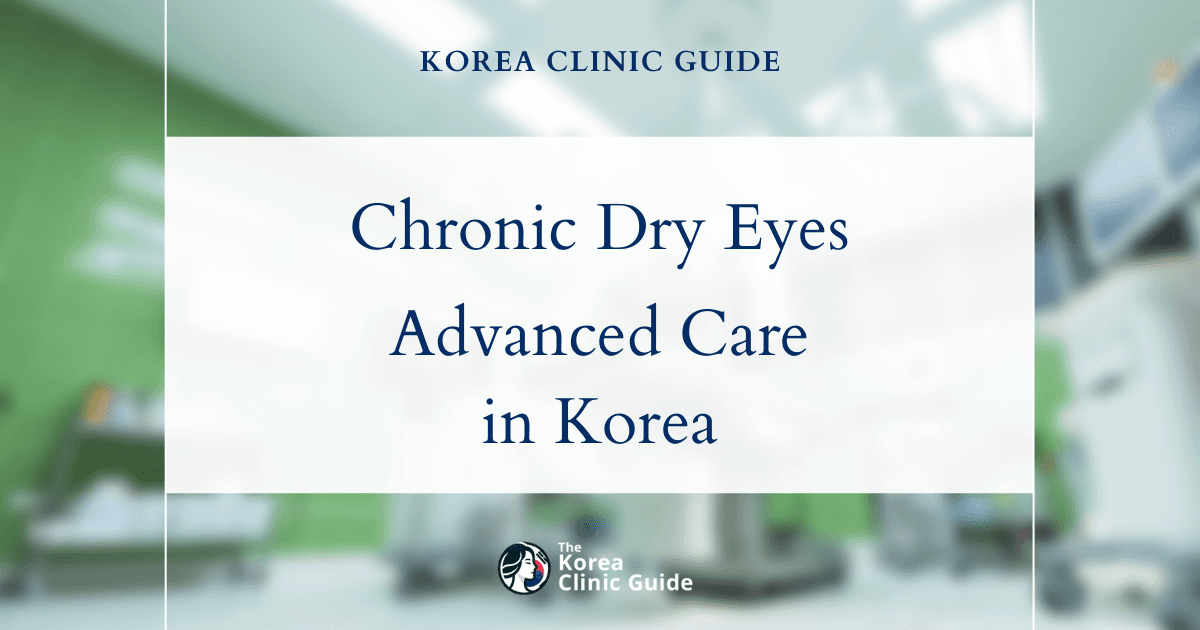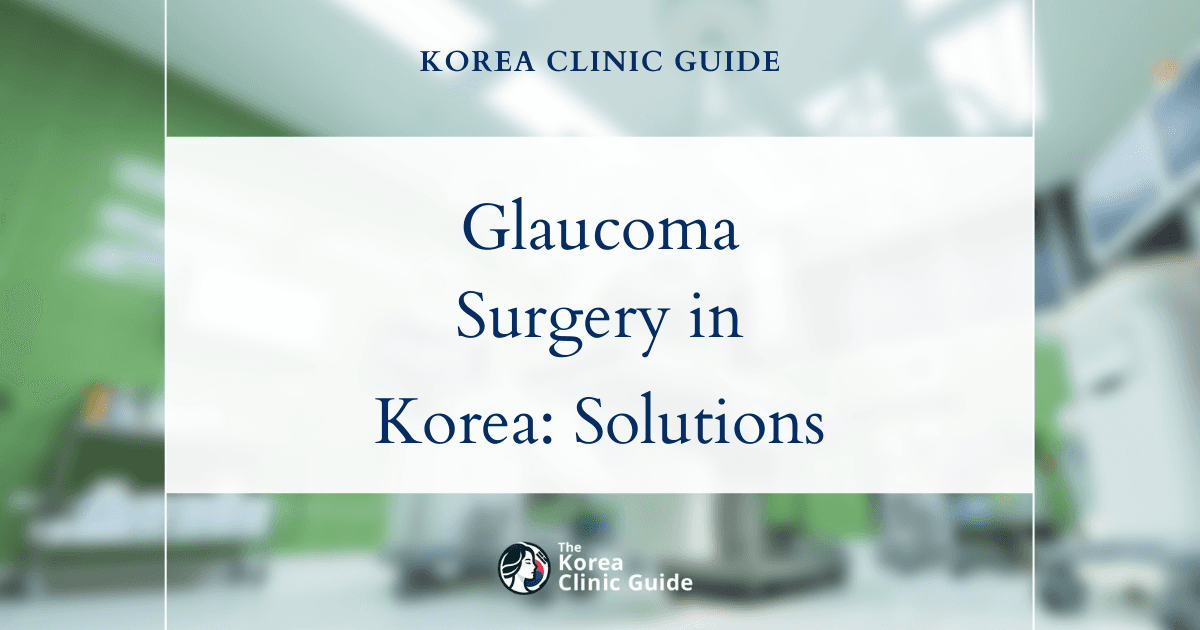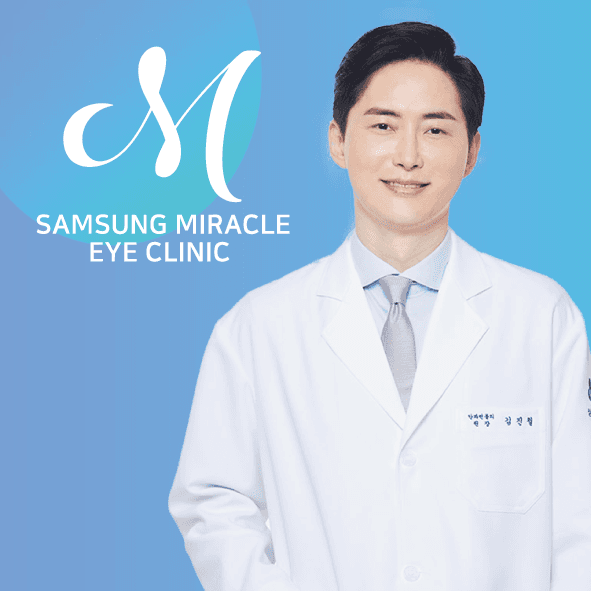Medical Tourism Blog
LASEK in Korea | Best Clinics, Costs, Procedure Types & More

Table of contents
- What Is LASEK?
- Best Clinics in Korea for Lasek
- LASEK in Korea
- Cost of LASEK in Korea
- Alternatives to LASEK
- Conclusion
Considering treatment in Korea? Everything you need to know e.g. — how to avoid scams, visas, interpreters, recovery tips — in our Medical Tourism Master Guide. Plan with confidence in minutes, not weeks!
Imagine being able to see the world clearly without glasses or contact lenses—LASEK, or Laser-Assisted Subepithelial Keratectomy, offers this reality to many in Korea, a country now hailed for its cutting-edge vision correction procedures and top-tier ophthalmologic care. This article provides insights into the details and advantages of LASEK, highlights some premier clinics in Korea, explains what makes Korea a leading choice for this procedure, compares its cost internationally, and explores alternative vision correction methods.
What Is LASEK?
Laser-Assisted Sub-Epithelial Keratectomy (LASEK) is a type of refractive laser eye surgery designed to correct vision problems such as myopia (nearsightedness), hyperopia (farsightedness), and astigmatism. Like its more well-known counterpart LASIK, LASEK reshapes the cornea to allow light entering the eye to be properly focused onto the retina for clearer vision. However, LASEK combines elements of two other procedures—LASIK and Photorefractive Keratectomy (PRK)—to offer a unique approach to corneal reshaping.
Who Is LASEK For?
LASEK is particularly suitable for individuals with thinner corneas or those who might not be ideal candidates for LASIK due to underlying eye conditions or lifestyle considerations. It is also a preferred option for individuals who are involved in contact sports or activities where there might be a higher risk of eye injury. Some of the specific criteria that make someone a candidate for LASEK include:
- Thin or irregular corneas
- Chronic dry eyes
- Certain corneal dystrophies
- High risk for corneal trauma, such as athletes or military personnel
Procedure Types
The LASEK procedure can be broadly categorized based on the techniques used and the equipment involved. Here are some of the commonly used methods:
-
Traditional LASEK: In this basic form of LASEK, an alcohol solution is used to soften the corneal epithelium (the outermost layer of the cornea). This softening allows the surgeon to gently lift and move aside the epithelial layer, exposing the underlying stromal layer. A laser then reshapes the stromal layer to correct the refractive error. After laser treatment, the epithelium is repositioned over the cornea, and a protective contact lens is placed over the eye to aid in healing.
-
Wavefront-Guided LASEK: Wavefront technology creates a detailed map of the unique imperfections in the eye’s optical system. During LASEK, this map guides the laser to make highly precise corrections to the cornea, potentially improving the quality of vision outcome and reducing the likelihood of post-procedure issues such as halos or glare.
-
Epi-LASEK: This variation uses a mechanical microkeratome to create an ultra-thin flap in the epithelial layer, eliminating the need for an alcohol solution. After the flap is moved aside, the stromal layer is treated with a laser to reshape the cornea, and the epithelial flap is repositioned.
Each type of LASEK offers specific advantages, and the choice of procedure often depends on the patient’s individual eye condition, corneal thickness, and visual requirements.
The LASEK Procedure in Detail
-
Pre-Operative Assessment: Before undergoing LASEK, patients will have a comprehensive eye examination to measure corneal thickness, pupil size, and refractive error. Advanced imaging technology is often used to map the eye’s surface and determine the best approach for laser correction.
-
Surgical Procedure: On the day of surgery, anesthetic eye drops are administered to numb the eye. Using the chosen method (traditional, wavefront-guided, or epi-LASEK), the surgeon then moves aside the epithelial layer. The excimer laser is directed towards the corneal stroma to reshape it meticulously. This part of the procedure typically takes less than a minute per eye.
-
Post-Operative Care: After laser treatment, the epithelial layer is repositioned, and a soft contact lens is placed over the cornea to act as a bandage. Patients are usually given antibiotics and anti-inflammatory eye drops to help the healing process and minimize discomfort. Follow-up visits are scheduled to monitor recovery and assess the clarity of vision.
Recovery and Results
The recovery period for LASEK is generally longer compared to LASIK, often taking one to two weeks for the epithelial layer to fully heal. Patients may experience discomfort, light sensitivity, and blurred vision initially. However, the long-term visual outcomes are comparable to those of LASIK, with most individuals achieving 20/20 vision or better.
Best Clinics in Korea for Lasek
Listed below are the best clinics in Korea for lasek:
| Clinic Name | Key Features | Special Techniques |
|---|---|---|
| BGN Eye Clinic Jamsil | Comprehensive range of advanced vision correction procedures, individualized care, focus on safety and precision, detailed pre- and post-surgery instructions, renowned for cataract and refractive surgeries | SMILE, LASIK, LASEK (notable for patients with thinner corneas), SMILE PRO, Implantable Collamer Lens (ICL) surgeries, cataract surgeries with monofocal and multifocal intraocular lenses |
| BnVIIT Eye Clinic | Over 30 years of experience, more than 550,000 successful eye surgeries, Gangnam location, advanced A.I. Vision Correction Prediction System, patient-centered care, high patient satisfaction | All-laser LASEK, LASIK, SMILE, handling complex and thin cornea cases, implantable lenses, orthokeratology, customized procedures using A.I. technology |
| Kangdong Sacred Heart Hospital | Modern, state-of-the-art facility, highly qualified professionals, wide range of specialties, internationally recognized protocols, quality care | Lasek surgery and other advanced ophthalmological services, cutting-edge technologies, personalized treatment planning |
BGN Eye Clinic Jamsil
BGN Eye Clinic Jamsil stands out as a leading eye care center in Korea, renowned for its comprehensive range of advanced vision correction procedures. The clinic offers innovative solutions such as SMILE, LASIK, LASEK, SMILE PRO, and Implantable Collamer Lens (ICL) surgeries, serving patients with a variety of refractive needs. Additionally, BGN Eye Clinic Jamsil specializes in cataract surgeries using both monofocal and multifocal intraocular lenses, helping patients regain clear vision and, in many cases, reduce or eliminate dependence on glasses or contact lenses.
Among these offerings, LASEK surgery at BGN Eye Clinic Jamsil is particularly notable for those with thinner corneas or patients who may not be suitable candidates for traditional LASIK. The clinic provides detailed pre- and post-surgery instructions, ensuring that every patient receives individualized care and achieves the best possible outcomes. With a focus on safety, precision, and patient-centered treatment, BGN Eye Clinic Jamsil remains a trusted destination for anyone seeking reliable and state-of-the-art vision correction in Korea.
Find more about this clinic here: BGN Eye Clinic Jamsil Website
BnVIIT Eye Clinic
BnVIIT Eye Clinic stands at the forefront of vision correction in Korea, located in the heart of Gangnam and backed by more than 30 years of specialized experience. With an impressive record of over 550,000 successful eye surgeries, BnVIIT Eye Clinic has established itself as a leading institution for those seeking the highest standards in ophthalmic care. The clinic is distinguished by its advanced A.I. Vision Correction Prediction System, which personalizes every procedure for optimal outcomes, and a comprehensive suite of refractive and lens-based correction methods. For patients considering LASEK or any vision correction procedure, BnVIIT Eye Clinic offers unparalleled expertise, technology, and patient-centered care.
Key Reasons Why BnVIIT Eye Clinic is the Best Choice for LASEK:
- Over 30 years of experience in ophthalmology and vision correction
- More than 550,000 successful eye surgeries, demonstrating reliability and expertise
- Located in Gangnam, Korea’s premier medical hub, making it accessible for both local and international patients
- Cutting-edge A.I. Vision Correction Prediction System for precise and personalized treatment planning
- Comprehensive range of refractive surgeries, including all-laser LASEK, LASIK, and SMILE procedures
- Expertise in handling complex cases, such as patients with thin corneas who are ideally suited for LASEK
- Wide selection of vision correction options including implantable lenses and orthokeratology
- Customization of every procedure to address each patient’s unique visual needs and lifestyle
- Renowned for safety, consistency, and high patient satisfaction in surgical outcomes
With a holistic approach that focuses on individualized care, technological innovation, and a robust surgical track record, BnVIIT Eye Clinic stands as the top destination for anyone seeking LASEK in Korea.
Find more about this clinic here: BnVIIT Eye Clinic Website
Kangdong Sacred Heart Hospital
Kangdong Sacred Heart Hospital, located in Cheonho, is a leading medical institution in Korea, known for offering a comprehensive range of specialized procedures in a modern, state-of-the-art facility. With an emphasis on quality care, the hospital brings together highly qualified professionals across multiple fields, ensuring patients have access to advanced treatment options and expert medical guidance. From general and orthopedic surgery to cardiology, oncology, and nephrology, the hospital’s broad expertise highlights its commitment to delivering exceptional healthcare solutions.
For patients seeking vision correction, Kangdong Sacred Heart Hospital provides Lasek surgery along with other cutting-edge ophthalmological services. The hospital’s dedicated staff utilizes the latest technologies and follows internationally recognized protocols, prioritizing patient safety and optimal visual outcomes. Whether for vision correction or complex medical needs, patients at Kangdong Sacred Heart Hospital can expect personalized care and advanced treatments in a trusted, comfortable environment.
Find more about this clinic here: Kangdong Sacred Heart Hospital Website
LASEK in Korea

LASEK (Laser-Assisted Sub-Epithelial Keratectomy) is a popular vision correction procedure in South Korea, known for its advanced medical technology and high success rates. Here is a detailed look at what it is like to undergo LASEK in Korea.
Finding a Clinic
Korea boasts a multitude of reputable eye clinics, especially in cities like Seoul and Busan. Many of these clinics are internationally accredited, ensuring that they meet global standards for safety and quality. Patients can find information about these clinics online, often in multiple languages, and can read reviews from former patients. Most clinics offer virtual consultations to discuss the procedure and determine candidacy.
Consultation and Pre-Procedure Preparation
Before undergoing LASEK, a thorough consultation and eye examination are conducted. These consultations typically involve a series of tests including corneal thickness measurement, pupil size, and eye curvature assessment. Korean clinics employ advanced diagnostic equipment, ensuring precise results. The preliminary meeting also serves to set expectations, discuss potential risks, and outline the recovery process.
In addition to medical tests, many clinics offer multilingual staff to assist international patients, providing translators and detailed literature in several languages to make the process as smooth as possible.
Day of the Procedure
On the day of the procedure, patients are prepped in a comfortable environment. Clinics in Korea are known for their state-of-the-art facilities that ensure a calming experience. The procedure itself begins with the application of numbing eye drops to eliminate any pain. The surgeon then gently removes the outer layer of the cornea (epithelium) and uses a laser to reshape the underlying corneal tissue.
The entire process usually takes less than an hour, and clinics often provide post-procedure resting areas where patients can relax before heading home. Specialized staff members are on hand to monitor immediate recovery and provide care instructions.
Post-Procedure Care
Post-procedure care is crucial for the success of LASEK. Korean clinics provide comprehensive aftercare packages, which typically include multiple follow-up visits to monitor the healing process. Patients are given detailed instructions on medication use, eye protection, and activities to avoid during the initial healing period.
Most clinics also offer 24/7 helplines managed by medical professionals, allowing patients immediate access to assistance if they experience any concerns or complications.
Recovery Experience
The recovery period for LASEK in Korea is closely monitored, and patients are frequently impressed with the level of care they receive. Patients are often provided with protective eyewear and medicated eye drops to aid in healing and reduce discomfort. Follow-up appointments are scheduled to ensure that healing is progressing as expected, and any necessary adjustments can be made.
The typical recovery period sees significant improvement in vision within a few weeks, with most patients achieving optimal vision in about one to three months. Korean clinics’ diligent follow-up care and modern medical practices significantly contribute to high satisfaction rates among patients.
Cost and Insurance
The cost of LASEK in Korea can vary depending on the clinic and the specific needs of the patient. However, Korea is known for offering competitive prices for high-quality medical procedures. Many clinics provide detailed cost breakdowns and offer various payment options, including financing for international patients.
While South Korean healthcare does not usually cover elective procedures like LASEK, some international insurance plans may cover part of the costs. It is advisable for patients to check with their insurance providers beforehand to determine what is covered.
Additional Services for International Patients
Korea's medical tourism industry is highly developed, and many eye clinics offer specialized services for international patients. These can include assistance with travel arrangements, accommodation, and even sightseeing tours for those wishing to explore Korea while they recover. The goal is to make the medical journey as seamless and stress-free as possible, ensuring that patients can focus on their recovery.
Undergoing LASEK in Korea combines advanced medical technology with a patient-focused approach, providing an overall positive experience that is recognized worldwide.
| Procedure Price | Korean Won (₩) | USD ($) |
|---|---|---|
| Low Price | ₩1,300,000 | $900 |
| High Price | ₩2,000,000 | $1500 |
Exchange rate as of 2025-05-22: 1 KRW = 0.0007 USD
Please note that these prices are approximate guidelines and can vary significantly based on the clinic and your individual circumstances.
Cost of LASEK in Korea
The cost of undergoing LASEK (Laser-Assisted Sub-Epithelial Keratectomy) in Korea can be quite appealing compared to many Western countries. On average, patients can expect to pay between $1,200 and $2,500 per eye for the procedure, depending on the clinic's reputation, the surgeon's expertise, and the specific technology used. Some high-end clinics may charge more, but the quality of care and outcome often justifies the expense.
In addition to the procedure itself, individuals traveling to Korea for LASEK need to consider the costs associated with the trip. Round-trip airfare can range from $600 to $1,500 depending on the season, airline, and departure city. Budget airlines and advance bookings may help reduce these costs.
Once in Korea, accommodation expenses vary based on personal preferences. A mid-range hotel in Seoul typically costs between $50 and $150 per night, while more budget-friendly options like guesthouses and hostels can range from $20 to $50 per night. Over a week-long stay necessary for pre-surgery consultations and post-surgery follow-up, accommodation costs can range from $140 to $1,050.
Daily living expenses, including meals and local transportation, should also be planned. Tourists can expect to spend around $20 to $50 per day on food if they opt for local cuisine, while transportation within the city is relatively inexpensive, with subway and bus fares averaging around $1 to $2 per trip. Taxi services are also affordable, with a base fare of approximately $3 and additional charges based on distance.
Overall, the total travel expenses, including flights, accommodation, and daily living costs, could range from $1,000 to $2,500, making the entire trip—including the LASEK procedure—fall anywhere between $3,400 to $7,500. These costs can be further optimized through careful planning and choosing cost-effective options.
Alternatives to LASEK
LASIK (Laser-Assisted In Situ Keratomileusis)
One of the most popular alternatives to LASEK is LASIK, a procedure that uses a laser to reshape the cornea to correct refractive errors. During the procedure, a thin flap is created on the cornea, which is then lifted to allow the laser to reshape the underlying corneal tissue. The flap is repositioned after the laser treatment, and it naturally adheres without the need for stitches. LASIK is known for its quick recovery time and minimal discomfort, making it a preferred choice for many patients seeking vision correction.
PRK (Photorefractive Keratectomy)
Another viable alternative is PRK, a predecessor to both LASIK and LASEK. PRK involves removing the outer layer of the cornea entirely before reshaping the underlying tissue with a laser. Unlike LASIK, PRK does not involve creating a corneal flap, which eliminates the risk of flap-related complications. This makes PRK suitable for patients with thinner corneas or those who engage in activities with a higher risk of eye injury. However, the recovery time for PRK can be longer compared to LASIK, often taking several days to weeks for full vision stabilization.
SMILE (Small Incision Lenticule Extraction)
SMILE is a newer technique that uses a femtosecond laser to create a small, lens-shaped piece of tissue within the cornea, which is then removed through a small incision. This minimally invasive procedure preserves more of the cornea's natural strength and structure compared to LASIK and LASEK. SMILE is particularly effective for treating myopia (nearsightedness) and has shown promising results with a faster recovery time and less postoperative discomfort. This option is increasingly being recognized for its precision and reduced likelihood of complications.
Conclusion
In conclusion, LASEK surgery in Korea represents a compelling option for individuals seeking high-quality, affordable, and advanced eye care. With the country's state-of-the-art medical facilities, highly skilled surgeons, and supportive healthcare infrastructure, patients are likely to experience excellent outcomes with minimal downtime. Additionally, Korea's adherence to rigorous safety standards and the availability of comprehensive postoperative care further enhance the appeal of choosing this destination for vision correction. Ultimately, undergoing LASEK in Korea can not only improve visual acuity but also offer a seamless and comfortable medical tourism experience.















